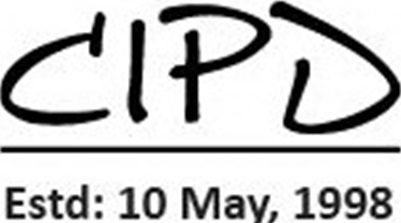The construction of Kaptai Hydro-electric project in 1960 caused serious destruction not only to the traditional and economic life of the CHT indigenous people, it also destroyed unknown number of species of plants of an area covering more than 254 sq. miles. This destruction still continues because of tremendous pressure on land, upland development interventions and massive destruction of forests. In recent years the commercial collection of some medicinal plants and fruits through middlemen have remarkably increased. There is also a great demand of skins of some species of medicinal trees and thus trees are exposed to light which leads to their total destruction. This way the CHT natural herbarium is rapidly leading towards the final vanish. Notable that some thirty years back the University of Chittagong was to open its department of Ethnic Botany targeting the CHt, the natural herbanium as its rear area for research. But it not heard that any research work or survey was undertaken by any quarter on the total species of medical plants or extent of destruction on these plants. In this scenario it is very important to undertake a dynamic initiative for conservation of traditional medicinal plants, protection and development of traditional way of treatment; including establishment of intellectual property rights over the herbal plants and Talliks and also patent rights on herbal medicines.
It is notable that the Boidyas are acquainted with many uncommon medicinal plants used to treat uncommon diseases. This indigenous knowledge is practiced and nurtured by Boidyas who belong to downtrodden and vulnerable sections of the society. This knowledge is also transferred generally from master to a trusted disciple or a family member who can even be a female. Except parentalapplication other methods like pill and liquid, topical application of ointment and paste, steam bath, steam inhalation and fomentation methods are used for treating many diseases. Jaundice, bone fracture, tumor, arthritis and etc. are successfully treated apart from common day to day diseases and even SSLE and cancer cases are also treated with miracle results as claimed by the Boidyas and patients. Innumerable species of herbal plants are used for this traditional or indigenous way of treatment.
Now a good number of hill people live in towns and cities who are dependent on modern allopathic medicines. They take the help of traditional treatment when medical doctors fail or when the cost of treatment is beyond their reach or when it cannot give a permanent solution. But in rural areas though influence of modern medicines is seen, still herbal medicines are used. In case of the remote and inaccessible areas people are mostly dependent on herbal medicines. It can be said that because of scarcity of medicinal plants, unavailability of processed herbal medicines like the allopathic one (the way these are presented and easy to take or use) and tremendous influence of modern medical science the people are gradually opting for modern allopathic medicines.
Since most of the Boidyas are not perfect professional and there is no state sponsorship or patronization from any relevant quarters hence, gradually the disciples of Boidyas or their children who belong to new generation are losing their interest on this invaluable traditional way of treatment. Tallik is the traditional medical formula developed from hundred years of observation and practice by which any kind of serious disease can be cured using herbal medicinal plants. But it is a matter of regret that this invaluable traditional treatment system is now on the way to extinction due to scarce of herbal medicinal plants and negligence of modern society. Besides, this traditional treatment system is now on the way to extinction due to scarce of herbal medicinal plants and negligence of modern society. This could be more meaningful and effective preserving the herbal medicinal plants and developing the traditional treatment system. Muralya Daru Tarum is established in a plot of 12 acres at Mogban, Rangamati Sadar Upazilla 1n 2012.
Objectives of Herbal Garden:
The immediate objectives of the project are:
1. Preservation of Herbal Medicinal Plants together with conservation of ecological balance of natural environment;
2. To establish an herbal garden as a tourist spot for development of eco-tourism in Rangamati.
3. To increase and ensure the supply of herbs for production of herbal medicine and to Boidyas for their traditional treatment;
4. Development of Traditional Treatment System of IPs;
5. To establish property and patent right on Herbs Medicine of IPs in CHT.
6. Research and Improvement of traditional herbal treatment of Boidyas focusing on problems and issues;
7. Production and supply of herbage;
Interventions:
The following activities shall be undertaken in the implementation of the project:
1. Plantation of herbs
2. Motivation of people:
3. Formation of Boidyas groups
4. List up of CHT herbs plants
5. Publication of Traditional Pharmacopoeia or Tallik books
6. Training on herbs identification
7. Research
8. Production and sale of herbs
